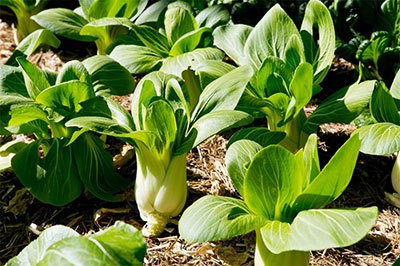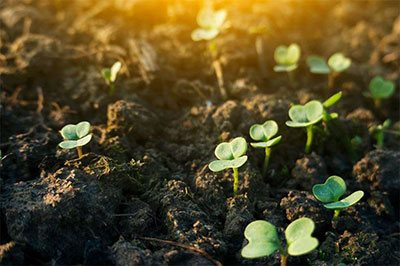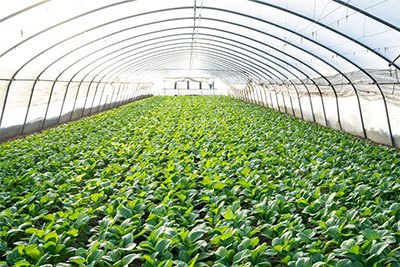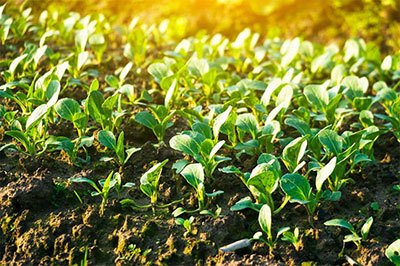Do you enjoy planting and harvesting vegetables in your own backyard? You’ll be delighted to know that growing Chinese cabbage can provide you with numerous benefits. At the same time, it will serve as a wonderful addition to your vegetable garden.
Creating your own assortment of vegetables is a good way to maximize your gardening and farming skills. It is quite handy, especially when your dinner requires Chinese cabbage.
Having your own mini grocery allows you to pluck your choice of veggies anytime without worrying if an ingredient is safe.
Table of Contents
What is a Chinese cabbage?

Chinese cabbage is also known scientifically known as Brassica Pekinensis. It is a form of oriental vegetable that originated from China. This vegetable is also referred to as white cabbage, celery cabbage, flowering cabbage, Napa cabbage, Michihli, or pakchoy.
It is often used in salads and sandwiches. Some people prefer to use Chinese cabbage instead of lettuce in their food. A Chinese cabbage looks more similar to lettuce than an actual cabbage. The leaves are softer and sweet.
It appears in an elongated shape with an outline of long green leaves. The middle part of the leaves looks pale and wrinkly, while the inner stems appear white. This vegetable grows fast and is usually ready for cutting in just a minimum of six weeks.
Chinese cabbage also tastes similar to lettuce. It is often eaten raw and is mixed in salads or sandwiches rather than served cooked.
How to grow Chinese cabbage
Chinese cabbage is not difficult to cultivate as long as you know how to take care of and properly grow this plant. In this article, we’ll show you how.
Here are some of the steps and requirements for a successful harvest.
1. Weather

A Chinese cabbage requires cool weather and environment for it to grow and thrive successfully. The suggested temperature should not go over 75°F. Otherwise, it will not flourish at all, especially during the 70 to 80-day maturation period, and will go back to its seed instead of forming a head.
If you live in a cool temperature environment, plant your seeds where they can grow directly under the sun. On the other hand, if you are located in a warmer region, plant your seeds in a shaded area.
2. Design
The best time to plant this vegetable depends on your location and weather conditions. Just make sure you do not plant your seed during the summer. In most areas, you can plant your crops during the month of April, and they will be ready for harvest towards the end of June.
Another option is to plant the seeds in mid-July to mid-August which will be harvested until fall.
So how do you know when it’s time to harvest? Observe your crops and check if the heads are fully grown to the size you prefer. Technically, you can harvest it at any period during its growth.
When you harvest your veggies, cut the head high and leave the lower part of the plant since it usually grows back after a while.
On the other hand, you can cut the entire head at soil level as soon as they appear compact and firm. Don’t forget to harvest before the winter season.
3. Space and quantity

Planting Chinese cabbage in your backyard won’t take up too much space, especially with its slender shape.
We highly suggest that you grow at least six to eight plants per person in your home. That’s typically the standard recommended vegetable-to-human ratio. Each plant usually grows as tall as 15 to 18 inches.
You should sow the seed at least half an inch deep with a 4-inch gap. The rows should be at least 18 inches from each other, depending on the variety of Chinese cabbage you are planting.
4. Soil
Keep your veggies planted in soil that has a good drainage system. Make sure the soil is rich in moisture and organic substance. This allows plants to grow faster while maintaining their tender leaves.
You can add some aged compost to the beds before you plant the seeds. A slow growth process may cause the plant to go back to seed. Always regularly water your plants for speedy growth.
If you don’t have enough space in your yard, you can opt to grow it in a container. Yes, you read it right. Just make sure you use at least an 8-inch wide and a 10-inch long container.
5. How to prevent diseases
Chinese cabbage is prone to acquiring yellow virus, black rot, and club root. Avoid handling your crops when it is wet.
As soon as you see any signs of infected plants, make sure you remove and terminate them immediately to prevent the spread of disease. Use a variety of Chinese cabbage that is resistant to disease and viruses.
This type of plant attracts aphids, flea beetles, cabbage worms, aphids, and other insects. You can pick them off, hose them or spray them with bacillus thuringiensis at an interval of 7 to 10 days.
6. Other plants and varieties

Before planting Chinese cabbage in your vegetable garden, make sure you properly segregate your plants. It will fit well with cabbages, Brussels sprouts, and cauliflower. Avoid planting beside tomatoes, okra, potatoes, and okra.
As previously mentioned above, Chinese cabbage grows in various types. Some types, specifically those with heads, mature quicker if they are planted straight from seed.
Learning the ropes
Just like any other task, the success of growing your Chinese cabbage will significantly depend on how you prepare, treat, and condition your plants. This is why it is important for you to research, gather information and follow these simple and easy instructions.
As you can see, Chinese cabbage does not require complicated procedures. So you shouldn’t let growing these veggies intimidate you.
If you find this article useful and entertaining, please share it with your family and friends. We appreciate your comments and feedback.
Just drop us a message below, and we’ll be happy to answer your questions.
